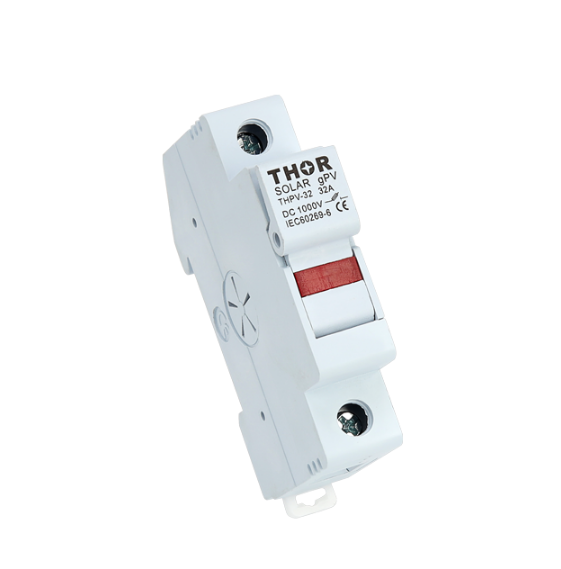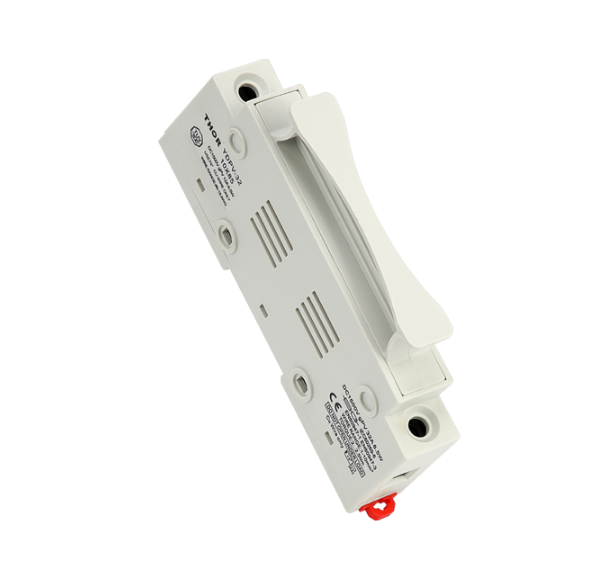To confirm the appropriate fuse needed, perform an accurate examination of current rating, rated voltage, breaking capacity (Isc), and different operating environments for every application scenario. In an electrical system, selecting the correct fuse is not only necessary to protect devices against overcurrent damage but also to limit safety risks.
1. Specify Rated Current and Rated Voltage
The rated current of the fuse should be 10%-15% higher than the working current of the device. For example, if the equipment’s working current is 10A, it is recommended to select a fuse with a rated current of 11-12A.
The rated voltage of the fuse should be at least 20% higher than the equipment's operating voltage. For instance, if the equipment’s operating voltage is 220V, the fuse's rated voltage should be 264V or higher.
| Device Operating Current (A) | Recommended Fuse Rated Current (A) | Device Operating Voltage (V) | Recommended Fuse Rated Voltage (V) |
|---|---|---|---|
| 5 | 5.5-6 | 110 | 132 |
| 10 | 11-12 | 220 | 264 |
| 20 | 22-24 | 380 | 456 |
2. Types of Fuses

Different circuits require specific types of fuses. Various applications in circuits require the selection of different types of fuses according to IEC (International Electrotechnical Commission) standards.
-
Fast-blow fuses (Type F): Suitable for items like printed circuit boards and small household appliances that are at increased risk of current surges. This type of fuse can interrupt the circuit in a very short time to prevent equipment damage.
-
Slow-blow fuses (Type T): Used for circuits with high inrush currents, such as motors and transformers. Slow-blow fuses can withstand short-duration spikes in current and tolerate the large load during startup without blowing.
-
High breaking capacity fuses (Type H): Designed to cut power during a power surge in industrial distribution systems, allowing equipment to be protected from high current faults. Their breaking capacity should be at least 100kA.
3. Calculate Breaking Capacity and Interrupting Capacity
The breaking capacity must be rated up to the level of Isc and a fault short circuit. If a short circuit occurs, this type of fuse will disconnect the circuit. The breaking capacity is the maximum current value for which the circuit can safely pass during a short circuit condition. To protect the system in case of a short circuit, it is necessary to choose an interrupting capacity greater than the breaking capacity of the fuse.
Breaking Capacity Calculation Formula
Isc=Un/Z
Where Un is the system’s rated voltage, and Z is the total impedance. For example, if the equipment’s operating voltage is 400V and its total impedance is 0.05Ω, then the breaking capacity is:
Isc=400/0.05=8000A
Selecting Interrupting Capacity
Interrupting capacity=Breaking capacity×(1.2~1.5)
For the above 8000A breaking capacity, it is necessary to choose a fuse with an interrupting capacity of 9600A to 12000A to ensure safe current interruption under a short-circuit condition.

For high-voltage equipment with a working voltage of 1000V and a total impedance of 0.02Ω, the short circuit current would be 50000A. In this case, a high breaking capacity fuse with an interrupting capacity of 60000A to 75000A should be selected. Proper matching of breaking capacity and interrupting capacity can prevent fuse damage caused by overcurrent during a short circuit, thus reducing secondary damage to electrical equipment.
4.Use Environment Concerns
The performance of fuses can be influenced by factors such as ambient air temperature, humidity and vibration. Rated current and operating voltage must comply with the established standards of a fuse for effective protection.
If the ambient temperature is increased by 10 ℃, then the current-carrying capacity of fuse should decrease within 5-10%. For instance, if the surrounding temperature is 50℃, carrying current should not exceed 90% rated current. Example: A device has a working current of 20A at 25℃ If the ambient temperature goes up to 50℃, then one must choose a fuse with rated current higher than 22A.
If they are used in environments with high humidity, fuses can experience their electrical performance being influenced by moisture. Therefor, they recommend choosing humidity-resistant fuses. Glass-blown or sealed fuses are known for use in humid and splash-prone areas, since they operate without problems within the ambient atmosphere.
